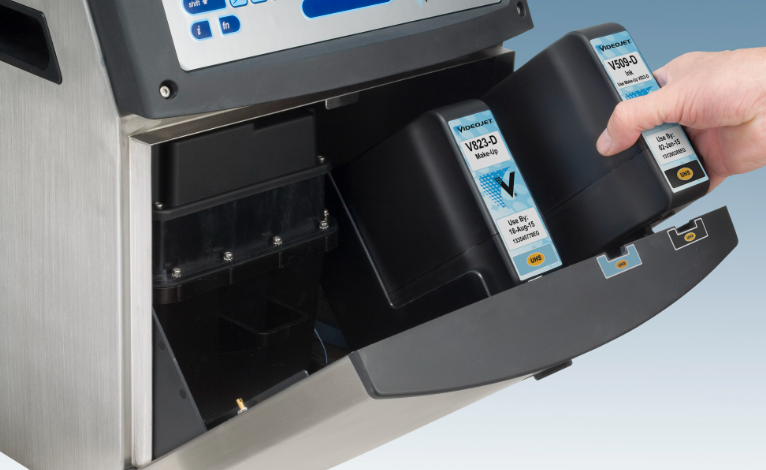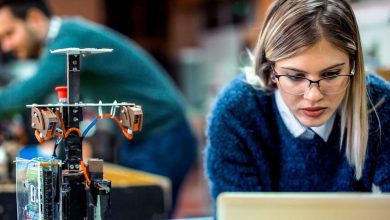The Ultimate Guide to Continuous Inkjet (CIJ) Printers

Introduction of Inkjet Printer:
An inkjet printer is a common type of computer peripheral used for producing high-quality printed documents and images. It works by propelling tiny droplets of ink onto paper or other print media to create text, graphics, and images. Inkjet printers have become incredibly popular due to their versatility, affordability, and ease of use.
These printers are suitable for a wide range of printing needs, from basic text documents to vibrant, high-resolution photographs. People widely use inkjet printers in homes, offices, and commercial settings. In this article, we will explore the key components and working principles of inkjet printers, emphasizing their advantages, common applications, and recent advancements in this technology. Whether you’re a home user, a small business owner, or a professional in a corporate setting, understanding how inkjet printers work and their capabilities can help you make informed decisions when selecting the right printer for your needs and ensure optimal results in your printing endeavors.

What is Continuous Inkjet Printer?
Continuous Inkjet (CIJ) printers are a type of non-contact printing technology used for marking and coding on various surfaces, primarily in industrial and manufacturing settings. These printers produce a continuous stream of tiny ink droplets and direct them onto a substrate to create text, numbers, barcodes, logos, and other markings. Industries commonly use CIJ printers for product packaging, labeling, and date coding.
Here are key features of CIJ printer:
- Non-Contact Printing: CIJ printers do not physically touch the surface of the product or packaging material, which is ideal for applications where contact may be impractical or damage-sensitive.
- High-Speed Printing: They are capable of printing at very high speeds, making them suitable for high-throughput production lines.
- Versatility: CIJ printers can print on a wide range of substrates, including paper, plastic, metal, glass, and more, making them versatile for various industries.
- Small Character Printing: Many industries utilize CIJ printers for printing small characters like expiration dates, lot numbers, and serial numbers.
- Ink Flexibility: These printers can use different types of inks, including water-based and solvent-based inks, depending on the application and substrate.
- Quick-Drying Inks: CIJ inks typically dry quickly, reducing the risk of smudging or smearing.
How does Continuous Inkjet (CIJ) Printer work?
Many industries widely employ Continuous Inkjet (CIJ) printers to achieve high-speed, non-contact printing of text, codes, and graphics on a variety of surfaces, such as packaging materials and bottles. Here’s how they work:
Ink Supply:
- CIJ printers use a specialised ink, typically a fast-drying solvent-based ink or a water-based ink, which is stored in an ink reservoir. The ink is pressurised to ensure a continuous flow to the printhead.
Printhead:
- The heart of a CIJ printer is its printhead. The printhead consists of a small nozzle or orifice through which the ink is forced. This nozzle is usually very fine, typically less than 100 micrometres in diameter.
Inkstream Formation:
- The nozzle pushes pressurized ink, generating a continuous stream of liquid ink. At a designated point, typically just outside the nozzle, this stream breaks into small, uniform droplets. Maintaining a constant speed is crucial for the inkstream.
Charging:
- As the ink droplets break away from the continuous stream, they pass through a charging electrode. This electrode gives each droplet a static electrical charge. Whether a droplet is positively or negatively charged depends on the specific character or image being printed.
Deflection:
- After charging, the droplets enter a deflection zone. In this zone, two charged plates are present—one with a positive charge and the other with a negative charge. The charged droplets move between these plates, and their charge determines how their paths change. A deflection system, which frequently includes electrostatic fields or magnetic fields, directs charged droplets selectively toward or away from the printing surface (substrate).
Printing:
- The deflected ink droplets strike the substrate to create the desired characters or images. Since the droplets are continuously generated and deflected, they form a continuous stream of markings on the substrate.
Control System:
- A sophisticated control system manages the entire process. It determines which droplets to charge and deflect to create the desired text, numbers, barcodes, or graphics. The control system also regulates ink pressure, droplet size, and other parameters to ensure consistent and high-quality printing.
Drying:
- Depending on the type of ink used, the printed markings may require drying to prevent smudging. One can achieve this through air drying, infrared drying, or other methods, depending on the ink formulation and the application.
Advantages of Continuous Inkjet (CIJ) printer:
- High Speed: CIJ printers can produce thousands of characters per second, making them suitable for high-speed production lines.
- Non-Contact Printing: Since the ink droplets do not physically touch the substrate, CIJ printing is ideal for irregular or delicate surfaces.
- Versatility: CIJ printers can work with a variety of inks, including pigmented inks for contrast on different surfaces.
- Low Operating Costs: The continuous ink supply system reduces downtime for ink changes, and the ink recovery system minimises ink wastage.
- Suitable for Variable Data: CIJ printers are capable of printing variable data such as dates, batch numbers, and QR codes.
- Ink efficiency: Continuous inkjet printers utilise a recycling system for ink, minimising wastage. The ink not used for printing is recirculated, reducing ink consumption and costs. Additionally, some printers offer ink management systems that monitor ink levels, enabling proactive replenishment and preventing interruptions in the printing process.
- Quick drying time: Continuous inkjet printers often use fast-drying inks, which allow for rapid drying of the printed content. This is particularly advantageous when printing on materials that require immediate handling or further processing.
FAQs: Continuous Inkjet Printer
Q.1 What are the main applications of CIJ printers?
A1: CIJ printers find common usage in various industries such as food and beverage, pharmaceuticals, cosmetics, and manufacturing for product packaging, labeling, and coding.
Q.2 What types of surfaces can CIJ printers print on?
A2: CIJ printers can print on a wide range of surfaces, including paper, plastic, glass, metal, and more. They are suitable for both porous and non-porous materials.
Q.3 Is CIJ printing suitable for high-speed production lines?
A3: Yes, Many companies prefer CIJ printers on high-speed production lines due to their capacity for rapid and continuous printing without direct product contact.
Q.4 What types of inks are used in CIJ printers?
A4: CIJ printers can use a variety of inks, including water-based, solvent-based, and UV-curable inks, depending on the specific application and substrate.
Q.5 Can CIJ printers print high-resolution graphics and barcodes?
A5: CIJ printers are best suited for printing text, numbers, and simple graphics. For high-resolution graphics and barcodes
Conclusion:
Continuous Inkjet (CIJ) printers are versatile and reliable tools that have found wide-ranging applications in various industries. They offer several key advantages, including high-speed printing, non-contact operation, and the ability to print on a variety of substrates. CIJ printers are capable of producing high-quality, legible codes and markings, making them essential for product identification, branding, and traceability. CIJ printers from Qodenext offer reliable solutions.






